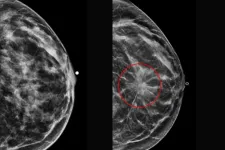In an analytic essay, "Whiteness: A Fundamental Determinant of the Health of Rural White Americans,” published Dec. 5 in the American Journal of Public Health, Caroline Efird, PhD, MPH, an assist professor at Georgetown University School of Health; and Derek M. Griffith, PhD, a professor at the University of Pennsylvania and adjunct professor at Georgetown, call for a discussion of implications and recommendations to begin addressing the persistent disadvantage in life expectancy experienced by white, rural people.
For almost two decades, the mortality rate for rural residents in the United States has been higher than their urban counterparts, and the difference in the rate has only increased.
White rural Americans, who comprise approximately three-fourths of rural residents, are more likely to experience higher rates of heart disease, stroke, cancer and suicide than their urban counterparts. Rural residents also tend to live in health care shortage areas and often have less access to grocery stores and public transit.
“Public health research commonly considers the health effects of oppression (racism) on racially minoritized populations, while it is rare to investigate the health effects of social supremacy (whiteness) for the racially majoritized population,” Efird and Griffith write in the article.
For the two public health researchers who ground their research in a sociological perspective, whiteness extends beyond a racial category to include a whole system of policies and normative beliefs that explain who experiences societal advantages and why. But unlike structural racism, which is used as a logic to explain why people of color typically experience worse health outcomes, Efird and Griffith posit that studying the health of rural white Americans demonstrates that societal advantages do not universally result in better health outcomes.
Efird and Griffith assign the system of whiteness as a fundamental determinant of health for rural white Americans. “A fundamental factor is something that shows how inequalities endure despite changes over time in diseases and medical interventions,” said Efird.
Rural white Americans can experience a range of social and environmental factors that impact their health, and the authors’ detail how whiteness can interact with those factors and ultimately harm rural white Americans' health.
Common beliefs among rural white Americans that are rooted in whiteness, such as adhering to a philosophy of individualism that focuses on self-reliance, can negatively influence health behaviors. For instance, such an embrace of individualism results in some rural white patients and providers blaming individuals for developing diseases such as mental illness, and criticizing the use of medication for an illness except for conditions perceived as outside an individual's control, such as cancer.
The presumed financial success intrinsic to being racialized as a white person can also adversely affect rural white Americans’ health if they perceive a threat or actual loss of their social status. For example, whiteness undergirds some rural White Americans’ fears that their cultural norms are diminishing and the collective social status of White people in the United States is deteriorating. Prior research indicates that these beliefs could have negative physical and mental health effects for white people.
Efird and Griffith hope that by introducing a new theoretical framework, more researchers will be motivated to do research and develop interventions that seek to improve the health of rural white Americans. They also believe empirical evidence is needed to determine how whiteness interacts with the effects of living in rural areas over the life course and across various levels of socioeconomic status. Investigating how whiteness affects health within rural populations may also need to account for differences in geographic regions (the Southeast versus the Pacific Northwest) as well as accounting for additional social categories such as gender, sexuality and religion.
“To improve U.S. population health, it is critically important to alleviate the burden of health disparities experienced by rural populations,” Efird and Griffith wrote. Further investigating racialized health differences within rural populations is also critical in order to intervene in the worsening overall health of rural populations.
“Without considering whiteness, well-intentioned public health campaigns and policies could exacerbate health inequities,” Efird and Griffith wrote. For example, campaigns urging citizens to mask during the COVID-19 pandemic for the health of the collective were ineffective with many rural white Americans who adhere to an ideology of individualism.
“Our hope is that in the future, public health practitioners, researchers, and policy makers think about white people as a racialized group and create culturally appropriate messaging that appeals to subgroups of white Americans’ lived experience in ways that seek to promote health for all people,” said Efird. “There’s still a lot of work that needs to be done, but we hope our work encourages more conversations and research on whiteness and health.”
###
Efird’s contributions to this article were supported in part by a fellowship at the Racial Justice Institute at Georgetown University.
About Georgetown University Medical Center
As a top academic health and science center, Georgetown University Medical Center provides, in a synergistic fashion, excellence in education — training physicians, nurses, health administrators and other health professionals, as well as biomedical scientists — and cutting-edge interdisciplinary research collaboration, enhancing our basic science and translational biomedical research capacity in order to improve human health. Patient care, clinical research and education is conducted with our academic health system partner, MedStar Health. GUMC’s mission is carried out with a strong emphasis on social justice and a dedication to the Catholic, Jesuit principle of cura personalis -- or “care of the whole person.” GUMC comprises the School of Medicine, the School of Nursing, School of Health, Biomedical Graduate Education, and the Lombardi Comprehensive Cancer Center. Designated by the Carnegie Foundation as a doctoral university with "very high research activity,” Georgetown is home to a Clinical and Translational Science Award from the National Institutes of Health, and a Comprehensive Cancer Center designation from the National Cancer Institute. Connect with GUMC on Facebook (Facebook.com/GUMCUpdate) and on Twitter (@gumedcenter).
END




